Did you enjoy this article? Checkout the podcast here: https://gettherapybirmingham.podbean.com/
Milton Erickson’s Biography:
Milton H. Erickson, born on December 5, 1901, in Aurum, Nevada, overcame significant challenges throughout his life and became one of the most influential figures in the field of psychotherapy. His journey and experiences with disability played a crucial role in shaping his intuitive and innovative approach to therapy.
At a young age, Erickson contracted polio, which left him partially paralyzed and confined to a wheelchair for most of his life. Despite his physical limitations, he developed exceptional observational skills and a deep understanding of nonverbal communication. Erickson keenly observed subtle cues, body language, and the nuances of human behavior, allowing him to connect with others on a profound level.
Erickson’s disability forced him to find alternative ways of perceiving and interacting with the world. In his early years, he developed a fascination with hypnosis as a means of utilizing the mind’s potential for healing and transformation. Through his own experiences with physical limitations, Erickson discovered the power of the unconscious mind and its ability to transcend physical boundaries.
His disability also cultivated an unwavering determination and resilience. Erickson believed that every individual possesses internal resources and strengths that can be harnessed for personal growth and therapeutic change. He drew upon his own experiences of overcoming adversity to inspire hope in his clients and guide them towards finding their unique solutions.
Erickson’s intuitive and innovative approach to therapy stemmed from his deep empathy and understanding of human suffering. His disability granted him a unique perspective, enabling him to connect with clients at a profound level and provide personalized interventions tailored to their specific needs.
Moreover, Erickson’s experiences with disability challenged traditional notions of therapy. He recognized that each individual possesses inherent wisdom and the capacity for self-directed change. This realization led him to develop non-authoritarian approaches that respected the autonomy and unique experiences of his clients. Erickson’s emphasis on collaboration, utilization of client resources, and indirect communication techniques revolutionized the field of psychotherapy.
Despite facing significant physical challenges throughout his life, Erickson’s disability became a catalyst for his intuitive and groundbreaking therapeutic approach. His personal experiences allowed him to perceive the world and human psychology in a distinctive way, fueling his innovative techniques and leading to lasting contributions in the field of psychotherapy. Erickson’s ability to transcend his own limitations and connect with others on a profound level continues to inspire therapists and clients alike.
The Influence of Milton Erickson:
Milton H. Erickson (1901-1980) was an American psychiatrist and psychotherapist who made significant contributions to the field of psychotherapy. Known for his innovative and influential approach, Erickson developed several theories and techniques that have had a profound impact on the profession. Here are some of his major publications, theories, and their influence:
“Hypnotic Realities: The Induction of Clinical Hypnosis and Forms of Indirect Suggestion” (1976): This book, co-authored with Ernest L. Rossi, delves into Erickson’s pioneering work in the use of clinical hypnosis. It explores his unique approach to inducing hypnotic states and utilizing indirect suggestions to facilitate therapeutic change. Erickson’s innovative use of hypnosis challenged traditional notions and expanded the possibilities of therapeutic interventions, inspiring subsequent generations of therapists.
Ericksonian Hypnosis: Erickson’s approach to hypnosis was distinct from traditional hypnotic techniques. He focused on utilizing indirect suggestions, metaphors, and storytelling to access and influence the unconscious mind. His methods emphasized the power of language, communication, and the individual’s own internal resources. Ericksonian hypnosis continues to be a significant influence in the field, shaping the practice of hypnotherapy and psychotherapy.
Strategic Therapy: Erickson’s strategic therapy approach aimed to help individuals make rapid and effective changes by strategically intervening in their patterns of interaction. He believed in tailoring therapeutic interventions to each individual’s unique circumstances and utilizing indirect suggestions to guide them towards solutions. Erickson’s strategic therapy has influenced various forms of brief therapy and solution-focused approaches, emphasizing the importance of flexibility, creativity, and practical problem-solving.
Utilization Approach: Erickson emphasized the utilization of a client’s existing strengths, resources, and experiences as catalysts for change. Instead of focusing solely on problems and pathology, he encouraged therapists to identify and amplify clients’ abilities and positive aspects. This approach has had a profound impact on the field of psychotherapy, fostering a more strengths-based and collaborative approach to working with clients.
Milton Model: The Milton Model is a collection of language patterns and communication techniques derived from Erickson’s therapeutic work. These patterns involve the strategic use of language to influence the client’s unconscious mind and promote positive change. The Milton Model has become an essential part of neuro-linguistic programming (NLP) and has influenced various forms of communication and persuasion techniques used in therapy and other fields.
Erickson’s major publications, theories, and techniques have had a lasting influence on the profession of psychotherapy. His innovative use of hypnosis, strategic interventions, and utilization of clients’ resources have inspired generations of therapists to adopt more flexible, collaborative, and solution-focused approaches. Erickson’s emphasis on the power of language and the unconscious mind continues to shape various therapeutic modalities, promoting creativity, individuality, and the utilization of clients’ strengths for transformative change.
How was Milton Erickson’s Model of Hypnosis Different:
Ericksonian hypnosis, named after the renowned psychiatrist and psychotherapist Milton H. Erickson, is an influential approach to hypnosis that emphasizes indirect suggestions, metaphors, and storytelling to facilitate therapeutic change. This unique form of hypnosis has had a significant impact on the field of psychotherapy, and its techniques continue to be used by therapists worldwide. In this article, we will explore some of the key techniques associated with Ericksonian hypnosis.
Utilization:
Utilization is a fundamental technique in Ericksonian hypnosis. It involves using the client’s current experiences, behaviors, and strengths as a starting point for therapeutic change. Rather than trying to control or suppress certain aspects of the client’s experience, the therapist utilizes and redirects them towards positive outcomes. By working with the client’s existing resources, Ericksonian hypnosis promotes empowerment and collaboration.
Indirect Suggestions:
Unlike traditional direct suggestions used in hypnosis, Ericksonian hypnosis relies heavily on indirect suggestions. Indirect suggestions are more subtle and less authoritarian in nature. They are often embedded within stories, metaphors, or anecdotes that resonate with the client’s unconscious mind. These indirect suggestions bypass conscious resistance and engage the client’s imagination and creative thinking, allowing for greater receptivity to therapeutic ideas and insights.
Metaphors and Storytelling:
Metaphors and storytelling play a crucial role in Ericksonian hypnosis. By using metaphors, the therapist can communicate ideas and concepts in a symbolic and non-literal manner. Metaphors create a rich and multi-layered experience that engages the client’s imagination, enabling them to gain new perspectives and insights. Through carefully constructed stories, the therapist can address sensitive or challenging issues indirectly, allowing the client to relate and find personal meaning within the narrative.
Pacing and Leading:
Pacing and leading is a technique employed in Ericksonian hypnosis to establish rapport and influence the client’s experience. The therapist begins by observing and mirroring the client’s current behavior, thoughts, or feelings (pacing). Once rapport is established, the therapist gradually introduces changes or suggestions (leading) that guide the client towards desired outcomes. This technique helps the therapist build trust and cooperation with the client, facilitating a smoother therapeutic process.
Utilization of Trance Phenomena:
Ericksonian hypnosis recognizes that trance is a natural and everyday phenomenon. Rather than inducing a deep trance state, the therapist focuses on utilizing and amplifying the client’s existing trance-like experiences. These can include moments of absorption, daydreaming, or even moments of self-reflection. By working with the client’s natural trance experiences, Ericksonian hypnosis harnesses the inherent potential for change and insight within these states.
These are just a few examples of the techniques used in Ericksonian hypnosis. Each session is tailored to the individual client, and the therapist adapts their approach based on the client’s unique needs, characteristics, and therapeutic goals. Ericksonian hypnosis emphasizes flexibility, creativity, and collaboration, providing therapists with a wide range of tools to facilitate transformative change and promote healing and growth.
It’s important to note that Ericksonian hypnosis requires extensive training and expertise to be effectively utilized. Therefore, it is recommended that these techniques be practiced by trained professionals in the field of psychotherapy or hypnosis.
Ericksonian Hypnosis’s Legacy:
Ericksonian hypnosis did not actually “die out,” but rather underwent changes in popularity and recognition over time. While it experienced a period of decreased visibility, it has continued to influence and shape the field of psychotherapy. There are a few factors that contributed to shifts in its prominence:
Erickson’s Unique Style:
Milton Erickson had a distinct and highly individualized therapeutic style that relied heavily on his personal charisma, storytelling, and utilization of the client’s unique experiences. As a result, replicating his approach exactly proved challenging for many therapists. Some found it difficult to adopt and apply his techniques without his specific presence and intuitive skills.
Limited Accessibility:
Ericksonian hypnosis requires extensive training and a deep understanding of the underlying principles and techniques. The intricacies of his approach can be complex and demand a high level of skill and expertise. As a result, not all therapists were able to receive thorough training or access the resources necessary to master his techniques.
Shifting Therapeutic Paradigms:
Over time, the field of psychotherapy has witnessed the emergence of various new theoretical orientations and therapeutic models. These newer approaches, such as cognitive-behavioral therapy (CBT) and mindfulness-based therapies, gained significant attention and popularity. Consequently, the focus of attention shifted away from Ericksonian hypnosis, leading to a decline in its visibility in certain circles.
Integration into Other Modalities:
While Ericksonian hypnosis may not be as explicitly labeled or recognized as it once was, many of its principles and techniques have been integrated into other therapeutic modalities. Elements of Ericksonian hypnosis, such as the use of metaphors, indirect suggestions, and utilization of the client’s resources, have found their way into various contemporary therapeutic approaches. This integration has allowed Erickson’s influence to persist, albeit in a less overt and distinct manner.
Despite any shifts in popularity, Ericksonian hypnosis remains highly respected and influential among practitioners who recognize its value and incorporate its principles into their work. Many therapists continue to draw upon the foundations of Ericksonian hypnosis to enhance their therapeutic practice and help clients achieve transformative change.
While Ericksonian hypnosis may not be as widely discussed or explicitly identified in contemporary therapeutic contexts, its principles and techniques continue to be integrated and applied within the broader field of psychotherapy. Its lasting influence can be seen in the ongoing evolution and diversification of therapeutic approaches, and its core tenets remain relevant for those therapists who appreciate the power of indirect communication, utilization, and the unconscious mind in facilitating therapeutic change.
Did you enjoy this article? Checkout the podcast here: https://gettherapybirmingham.podbean.com/
Bibliography:
Erickson, M. H. (1959). Hypnosis in Painful Terminal Illness. American Journal of Clinical Hypnosis, 1(4), 117-121.
Erickson, M. H. (1965). A Hypnotic Technique for Resistant Patients. American Journal of Clinical Hypnosis, 8(1), 8-32.
Erickson, M. H., & Rossi, E. L. (1979). Hypnotherapy: An Exploratory Casebook. Irvington.
Erickson, M. H., & Rossi, E. L. (1976). Hypnotic Realities: The Induction of Clinical Hypnosis and Forms of Indirect Suggestion. Irvington.
Erickson, M. H., & Rossi, E. L. (1980). The Collected Papers of Milton H. Erickson on Hypnosis (Vols. 1-4). Irvington.
Haley, J. (1973). Uncommon Therapy: The Psychiatric Techniques of Milton H. Erickson, M.D. W.W. Norton & Company.
Rosen, S. (1991). My Voice Will Go with You: The Teaching Tales of Milton H. Erickson. W.W. Norton & Company.
Zeig, J. K. (1980). A Teaching Seminar with Milton H. Erickson. Brunner/Mazel.
Zeig, J. K. (1985). Experiencing Erickson: An Introduction to the Man and His Work. Brunner/Mazel.
Zeig, J. K., & Gilligan, S. G. (1990). Brief Therapy: Myths, Methods, and Metaphors. Brunner/Mazel.
Further Reading:
Battino, R. (2005). Metaphoria: Metaphor and Guided Metaphor for Psychotherapy and Healing. Crown House Publishing.
Gilligan, S. G., & Price, R. (1993). Therapeutic Conversations. W.W. Norton & Company.
Lankton, S. R. (1980). Practical Magic: A Translation of Basic Neuro-Linguistic Programming into Clinical Psychotherapy. Meta Publications.
Lankton, S. R., & Lankton, C. H. (1983). The Answer Within: A Clinical Framework of Ericksonian Hypnotherapy. Brunner/Mazel.
Keeney, B. P. (1990). Improvisational Therapy: A Practical Guide for Creative Clinical Strategies. Guilford Press.
Keeney, B. P. (1991). Aesthetics of Change. Guilford Press.
Neumann, J. K. (1994). Milton H. Erickson, M.D.: An American Healer. Saybrook Publishing Company.
Rossi, E. L. (1986). The Psychobiology of Mind-Body Healing: New Concepts of Therapeutic Hypnosis. W.W. Norton & Company.
Rossi, E. L., & Erickson-Klein, R. (2008). The Collected Works of Milton H. Erickson, M.D. (Vols. 1-16). Crown House Publishing.
Yapko, M. D. (2003). Trancework: An Introduction to the Practice of Clinical Hypnosis (3rd ed.). Brunner-Routledge.














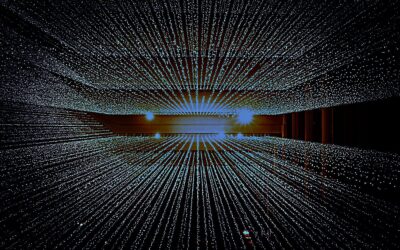
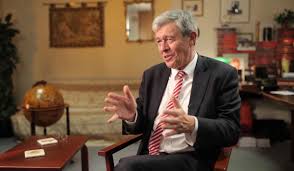
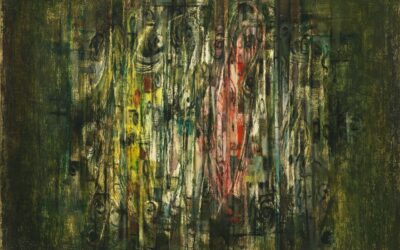



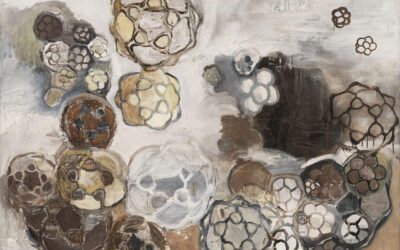

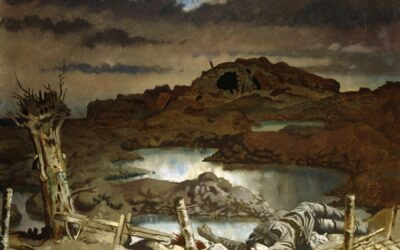
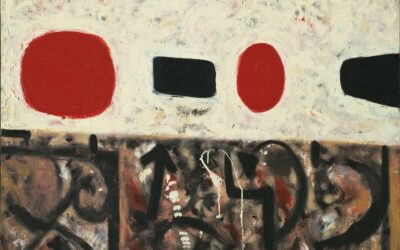


0 Comments